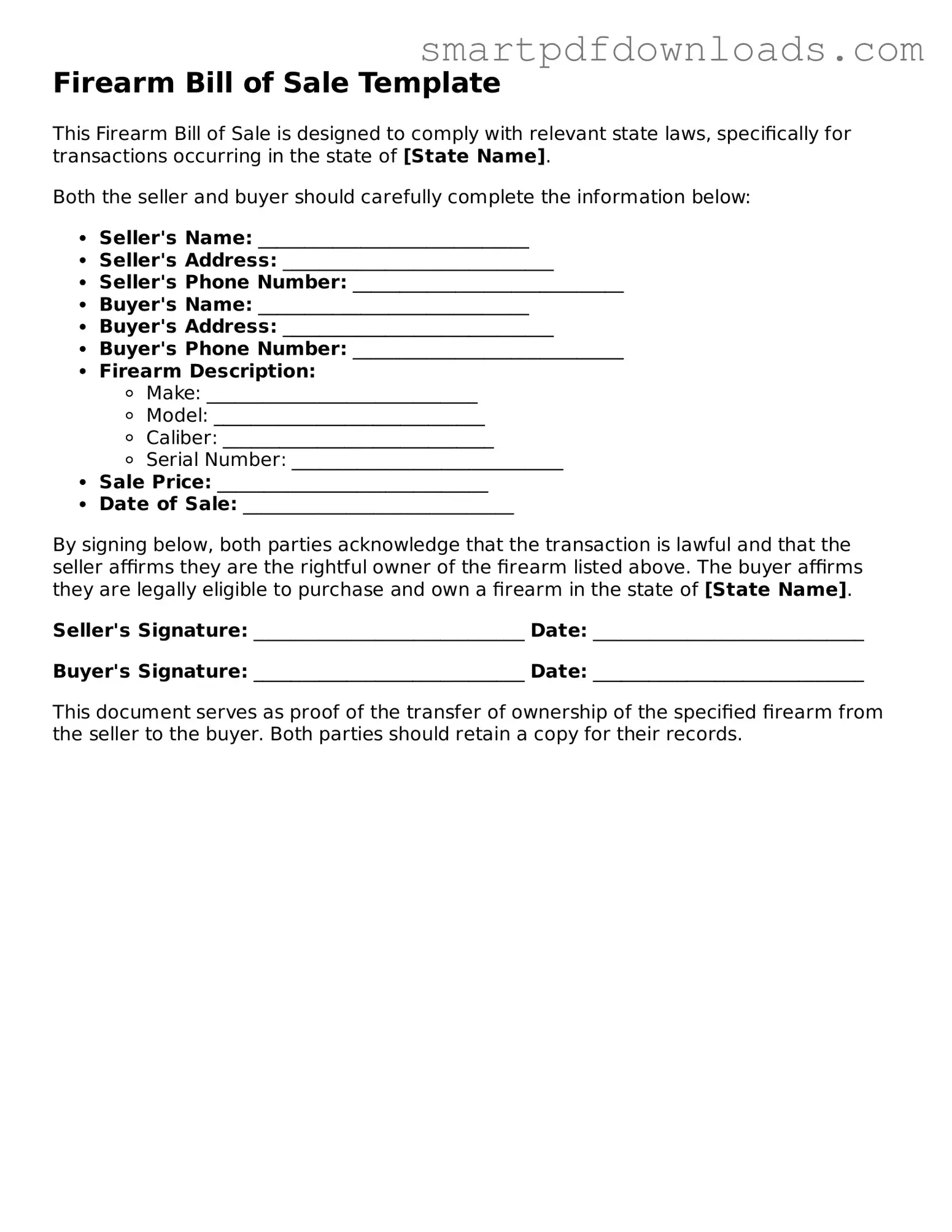Firearm Bill of Sale Template
This Firearm Bill of Sale is designed to comply with relevant state laws, specifically for transactions occurring in the state of [State Name].
Both the seller and buyer should carefully complete the information below:
- Seller's Name: _____________________________
- Seller's Address: _____________________________
- Seller's Phone Number: _____________________________
- Buyer's Name: _____________________________
- Buyer's Address: _____________________________
- Buyer's Phone Number: _____________________________
- Firearm Description:
- Make: _____________________________
- Model: _____________________________
- Caliber: _____________________________
- Serial Number: _____________________________
- Sale Price: _____________________________
- Date of Sale: _____________________________
By signing below, both parties acknowledge that the transaction is lawful and that the seller affirms they are the rightful owner of the firearm listed above. The buyer affirms they are legally eligible to purchase and own a firearm in the state of [State Name].
Seller's Signature: _____________________________ Date: _____________________________
Buyer's Signature: _____________________________ Date: _____________________________
This document serves as proof of the transfer of ownership of the specified firearm from the seller to the buyer. Both parties should retain a copy for their records.
